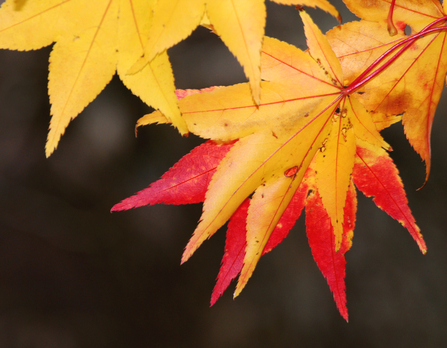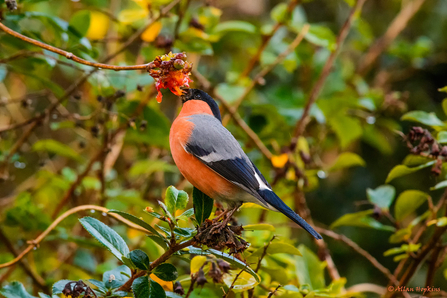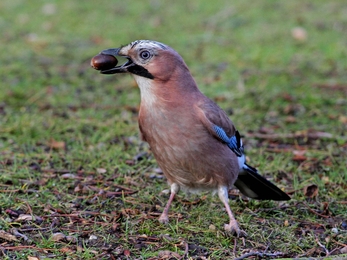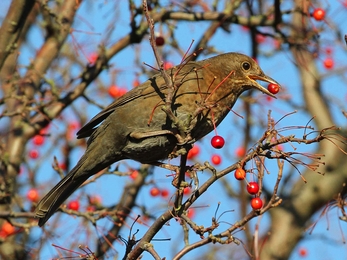Welcome to the November edition of our wildlife-friendly gardening blog. As leaves reveal their hidden colours, the mellow hues and fiery reds signal that winter is on its way. The changing season will bring new challenges for wildlife, but we can help with simple actions in our gardens and green spaces.
Wildlife-friendly gardening in November
Throughout the year we will be sharing monthly tips on how you can help wildlife in your garden, local green space or on your balcony. From pots on patios to shrubs in borders, we can all make space for nature in 2023 and help stop the decline in biodiversity.

Alan Price / Autumn maple leaves
Sources of nectar in the garden are increasingly hard to find for pollinators. There are, however, garden plants native to southern Europe which can help fill this gap. The late flowering climber, Spanish Clematis (Clematis cirrhosa) and the shrub Viburnum tinus will both help bumblebees ‘bulk up’ before hibernation. Heathers are also a great source of nectar and there are many garden varieties of Erica which flower from winter to spring and will happily grow in all types of soil.
It’s great to provide food, but please remember it's just as important to provide somewhere for bumblebees (and other insects) to hibernate. Bumblebee queens will dig into loose, well-drained soil under north facing shrubs and hedges. They will also hibernate under leaf litter, in open compost heaps and in mossy lawns amongst longer grass.
In the wildlife garden this month look out for our species of the month - the cheeky, chirpy house sparrow. Help them survive the winter by providing food and fresh water. One of the reasons sparrows are in decline is the loss of nest sites. Sparrows love to nest in cavities, especially roofs which have small gaps and holes in their eaves. Home improvements for humans, however, aren’t always home improvements for birds. Providing nest boxes is a great way of helping them find alternative nest sites, especially if you have plastic fascias. House sparrows love to nest in big family groups, so put up several boxes in a row or you could get a bespoke sparrow nest box. Autumn is a good time to do this, as it gives birds a chance to ‘view’ the accommodation before moving in next spring!
Other species to look out for this month include jays and squirrels. Both are busy caching nuts in the ground to retrieve when food becomes harder to come by. Fortunately for trees, neither jays nor squirrels have the best memories and not all the winter stash will be re-found, making this an important method of seed dispersal for many trees and shrubs. As well as nuts, 2023 has been a great year for berries! Hawthorn, Pyracantha, holly, elders and Viburnum lantana (Wayfaring Tree) will all provide welcome food for birds including blackbirds and thrushes.
This month, cut back long honeysuckle stems (native Lonicera pericylmenum) for more flowers and fruit next year. While the soil is still warm, plant bare root shrubs, trees and hedges. Bare root plants are cheaper than pot grown and there is less plastic. Planting now means they will have all winter to establish a good root system.

Allan Hopkins / Eurasian bullfinch feeding on honeysuckle
It might be a bit colder outside, but November is a good time to dig a pond or create a bog garden. You’ll soon warm up and there should be plenty of rainfall to fill them at this time of year! Rainwater will carry less nutrients than tap water, so your new pond will have a better chance of not filling with algae in the spring. Check out our wild and wet leaflet for more information.
Once again, thank you for gardening for wildlife! You are helping create and connect habitats, providing stepping-stones for wildlife to move through the landscape and increasing resilience to pressures such as climate change. If you haven’t already applied for one of our free ‘Wildlife-Friendly Space’ awards, please have a look at our website and help us promote more wildlife friendly spaces for a Wilder Dorset!
See you next month for the final wildlife friendly gardening blog of 2023.






